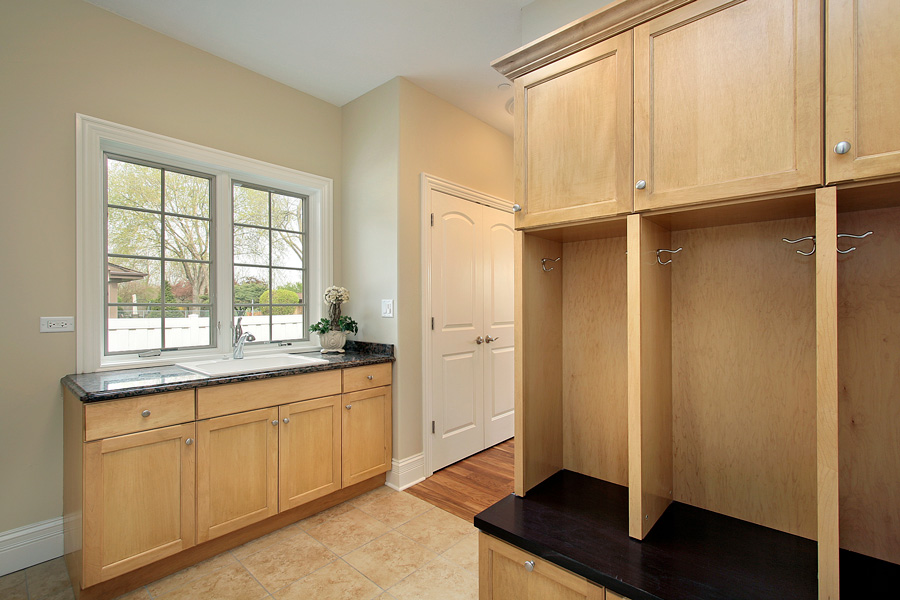Your home should be a sanctuary, a place where you can feel relaxed and at peace after a long day. But when life is chaotic and the boundaries between the outside world and your personal space blur, it can be hard to find that calm. That’s where transitional spaces like mudrooms come into play.
A mudroom, often dismissed as a simple utility space, holds untapped potential to support mental well-being. With thoughtful design and purpose, this area can transform into a restorative buffer that nurtures your mind.

The Mental Health Benefits of Transitional Spaces
Stepping through the door from the outside world into the sanctuary of your home requires a mental reset, and mudrooms can provide the perfect environment for this transition.
Decompression Zone
Mudrooms allow you to pause for a moment as you leave behind the hustle of outdoor activities. Whether you’re coming home from a long workday, a stressful commute, or a muddy outdoor adventure, these spaces give you a brief moment to breathe and reset before fully entering your living space.
Reduced Chaos
Clutter is a known stressor. A well-designed mudroom organizes your belongings, giving everything from coats to keys a designated space. This reduces visual clutter in the rest of your home and fosters a sense of order.
Boundary Creation
Mudrooms create a physical and mental boundary between the outside world and your personal sanctuary. They help you establish a sense of control over what comes into your home, not just physically but emotionally as well.
Elements of a Therapeutic Mudroom
To maximize the mental health benefits of a mudroom, focus on design choices that foster relaxation, harmony, and functionality. Simple yet intentional touches can turn this transitional space into one that supports your overall well-being.
1. Natural Elements
Including natural materials and living elements in your mudroom design can evoke a sense of calm. For example:
- Wood and Stone: Use natural wood for benches and cabinets or slate tiles for flooring to bring earthy tones into the space.
- Plants: Add greenery like potted ferns or small succulents to enhance the connection to nature. The visual and air-quality benefits of plants can be instantly calming.
2. Textural Comfort
Tactile experiences can help ground your mind and relieve stress as you enter your home. Layer textures through:
- Rugs and Throws: Use woven rugs made of jute or sisal for the floor and drape soft blankets over a bench for added comfort.
- Storage Baskets: Wicker or fabric baskets provide both organization and a touch of hominess.
3. Inviting Scents
A sensory experience is incomplete without appealing aromas. You can consider:
- Adding an essential oil diffuser with calming scents like lavender, eucalyptus, or citrus.
- Using scented sachets in storage cubbies or for shoe racks to keep the area fresh.
4. Practically Organized Layout
The layout of the mudroom should make coming and going as stress-free as possible. Keep these practical design tips in mind:
- Hooks and Cubbies: Dedicated spaces for coats, bags, and footwear prevent items from piling up.
- Benches with Storage: A bench allows for comfortable shoe removal, while storage underneath keeps clutter out of sight.
- Designated Drop Zones: A key tray, mail slot, or charging station ensures that essentials are organized and easy to find.
5. Soft Lighting
Lighting plays a big role in regulating your mood. Use warm, inviting lighting in your mudroom to create a soothing ambiance. If possible, incorporate natural light through windows or skylights to enhance the connection to the outdoors.
Conclusion
Mudrooms may not be the first place you think of when designing a home, but they can have a profound impact on how you feel. By adding natural textures, calming scents, and functional organization, these spaces become more than just an entryway. They become a space to reset, recharge, and start fresh.

